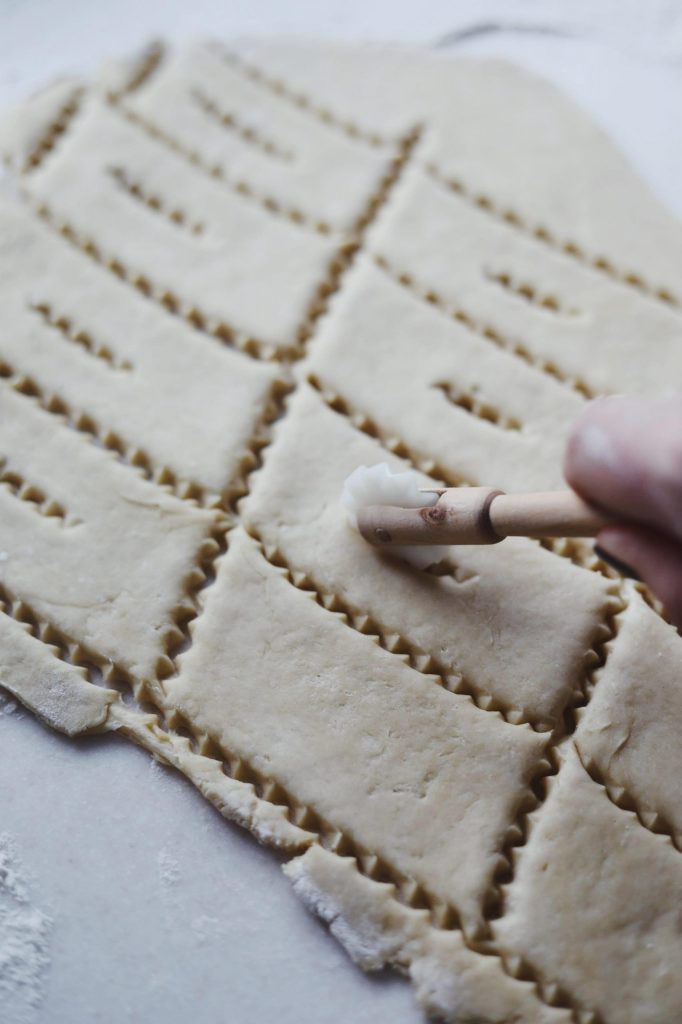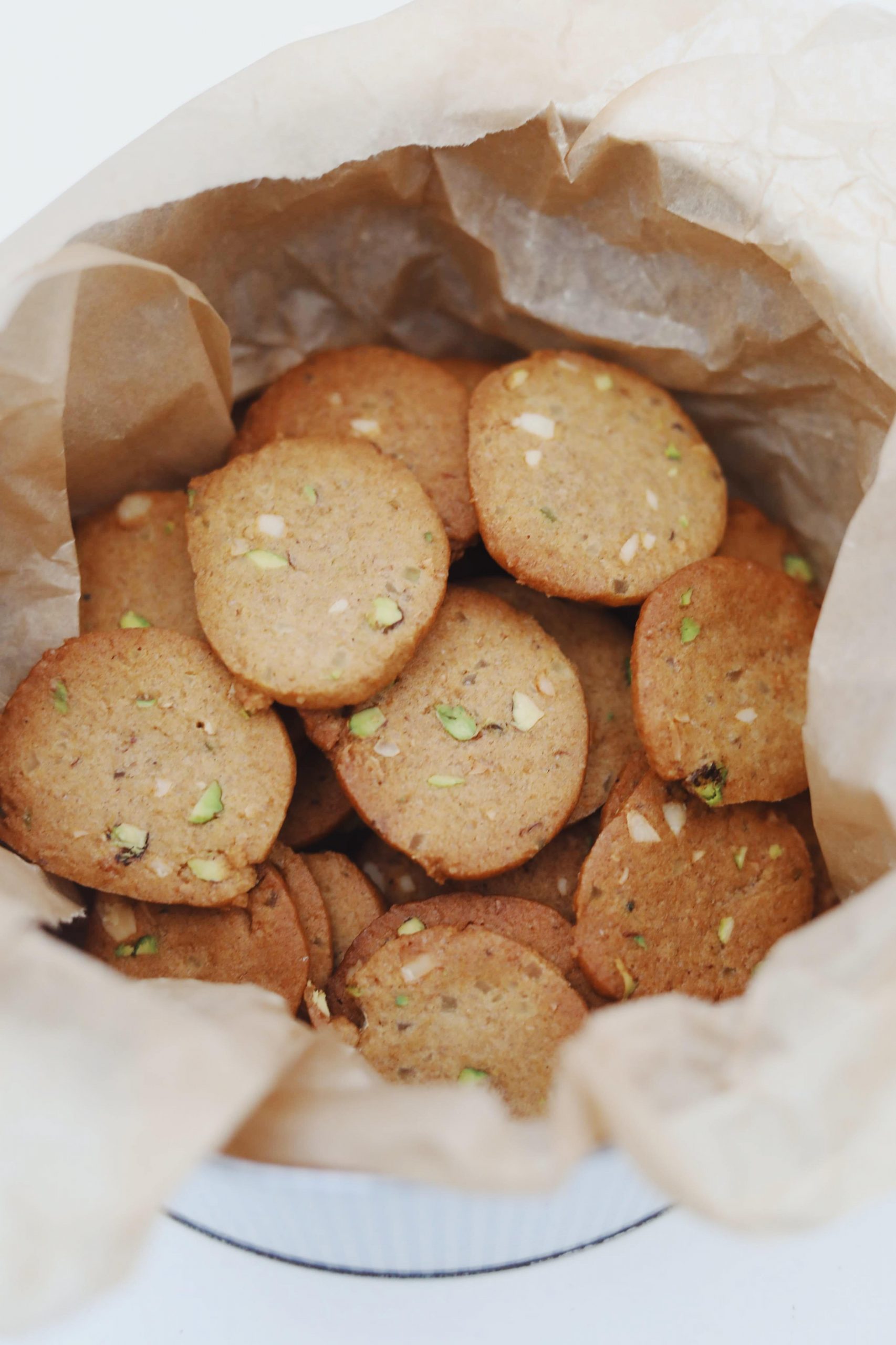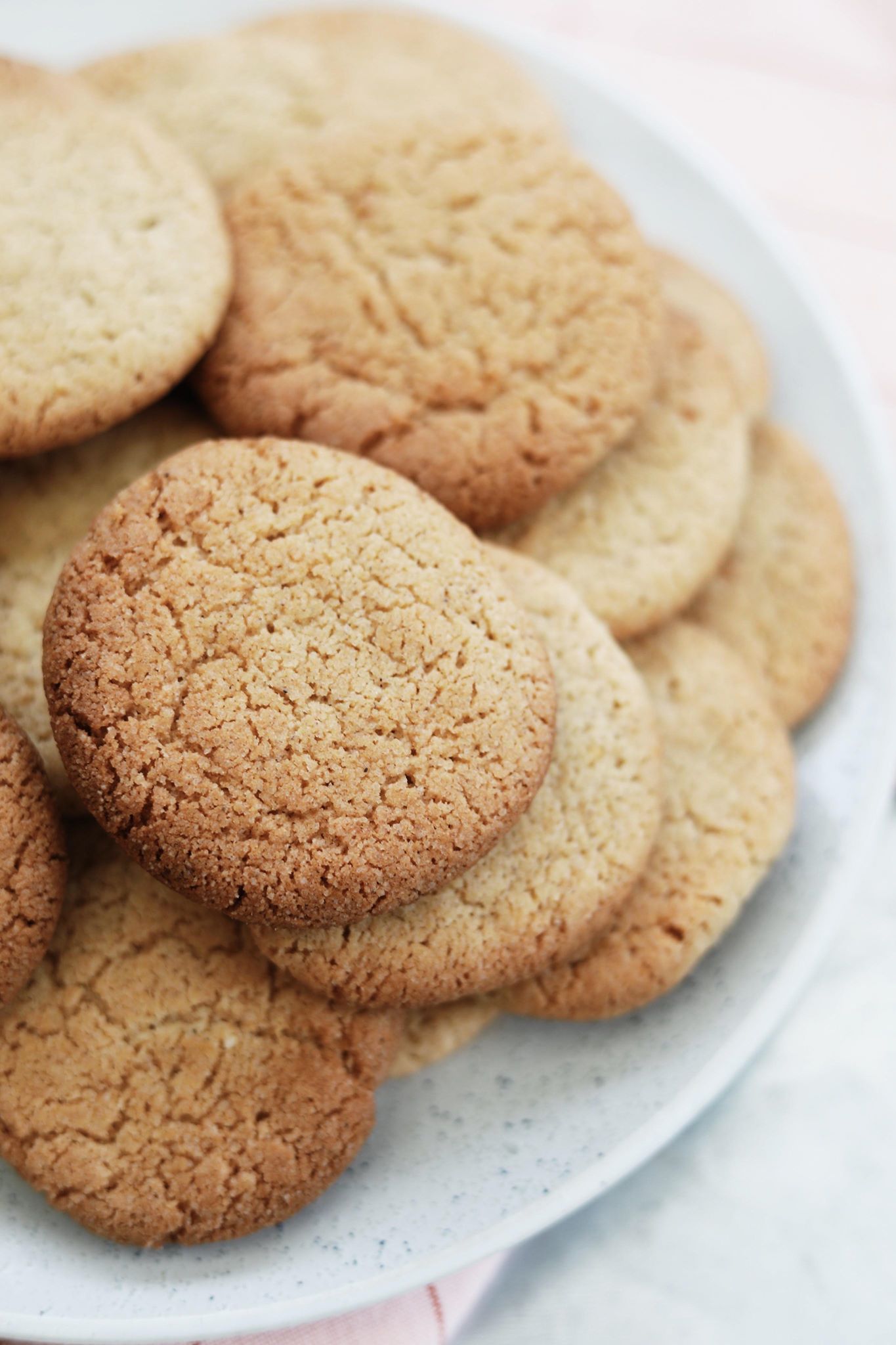Danish klejner – Recipe for large, airy klejner from Møn in Denmark. These lovely klejner are crispy on the outside, and airy and soft on the inside. They are not at all like the small, dark, cookie-like klejner you probably know. They are more like a bread or maybe like a donut. The klejner are not sweet and are eaten with a sprinkle of powdered sugar and a good dollop of jelly, almost like when you serve apple slices. It tastes really delicious and you have to try it! The recipe is an old family recipe from Møn, where my grandmother is from, and it is a tradition that we cook these klejner every year for Christmas – we often serve them with afternoon coffee on Christmas Eve afternoon.
Here I have made some of the klejner extra large and decorated them with lemon glaze, as they do in Norway, and they may remind you of the klejner that are sold as “Norwegian klejner” in the bakery of supermarkets.
Klejner taste best the day they are cooked, but they can easily be stored in a tightly sealed cookie tin. They will just become a little softer. You can also freeze them. The recipe makes a fairly large portion of dumplings, but you can try half a portion.
Cooking klejner in hot fat is not for children, but everyone can help roll out the dough and twist the klejner. It doesn’t matter if the klejner are not exactly the same and perfect – they taste just as good for that reason! The dough should be cold when the dumplings are cooked, because then they rise better in the hot fat. You shouldn’t put too many in the pan at a time, as the fat will cool down a bit. If the fat is hot enough during cooking, and you also make sure to let the klejner drip off well on kitchen paper afterwards, they won’t be particularly greasy. Flavors can be added to the dough, such as cardamom, vanilla or lemon zest depending on what you’re into. I just like them the way they are!
Danish klejner
Ingredients
Instructions
Danish klejner
Crumble/chop the butter into the flour until crumbly. It is easiest to make the dough in a food processor. Add sugar and antler salt and mix. Stir the yeast into a little of the buttermilk.
Add it to the flour, together with the rest of the buttermilk, cream and eggs. Quickly beat or knead the dough together into a smooth dough. Refrigerate the dough to rise for approx. 2 hours.
Divide the dough into 2-3 portions and roll out one portion at a time on a floured board to approx. 4-5 mm thickness. In the meantime, put the rest of the dough back in the refrigerator.
Cut the dough into strips of approx. 4 cm with a klejner cutter or a regular knife. Cut the strips diagonally into pieces of approx. 8-10 cm. Cut a groove of a few cm in the middle of each piece.
Twist the klejners by folding half of the dough piece through the groove. Straighten the dough when it has passed through the groove, so that it gets the right little shape. You can also leave some pieces of dough that are not twisted into little pieces.
Place the little pieces on a piece of baking paper on a tray or similar. which is placed in the refrigerator until the little pieces are to be cooked.
Melt the lard and palmin in a pan, and let it heat up well. It should be so hot that it sizzles and bubbles around a match inserted into the fat.
Take some of the little pieces out of the refrigerator and carefully put 2-3 cold little pieces at a time into the hot fat and cook them for a few minutes on each side, until they are nicely light brown. The dough should rise during cooking.
Lift the little pieces up (this is easiest with a slotted spoon), let them drain and place them on a plate covered with a good layer of kitchen paper. Continue until you have cooked all the little pieces. Sprinkle the cookies with powdered sugar before serving with jelly. Enjoy!
Danish klejner: a traditional holiday treat
Klejner are a beloved Danish pastry, especially popular during the Christmas season. These deep-fried, twisted cookies are known for their crispy texture and subtle sweetness, making them a delightful addition to any festive gathering. The name “klejner” is derived from the Danish word for “to twist,” which perfectly describes the shape of these delectable treats.
The dough for klejner is typically made from a mixture of flour, sugar, butter, and eggs, often flavored with cardamom or vanilla. This combination creates a rich, slightly sweet base that is easy to work with. The dough is rolled out and cut into strips, which are then twisted and shaped before being fried until golden brown.
Once cooked, klejner are often dusted with powdered sugar, adding a touch of sweetness that complements their crispy exterior. They are perfect for enjoying with coffee or tea, making them a popular choice during holiday visits with friends and family.
Klejner hold a special place in Danish holiday traditions, often served alongside other festive treats like gingerbread and marzipan. The process of making klejner can be a fun family activity, with generations coming together to create these delightful pastries. Their unique shape and satisfying crunch make klejner a cherished symbol of Danish celebrations, bringing warmth and joy to the festive season.













Please write a comment